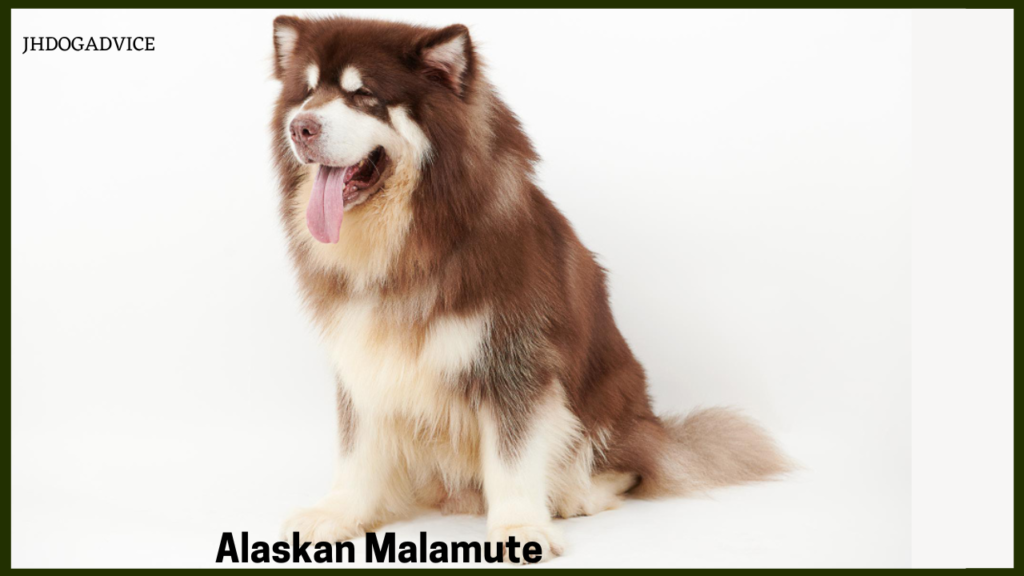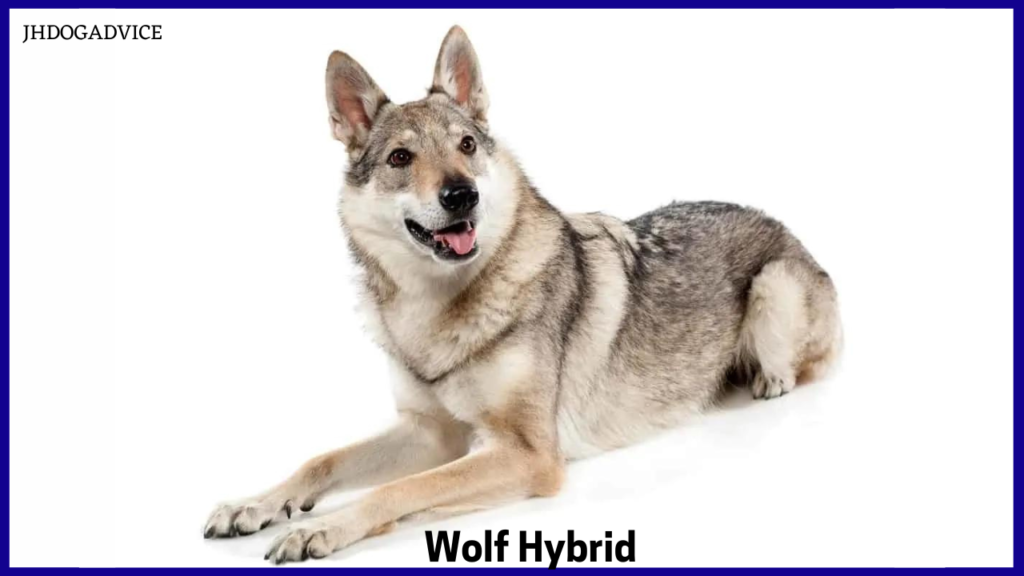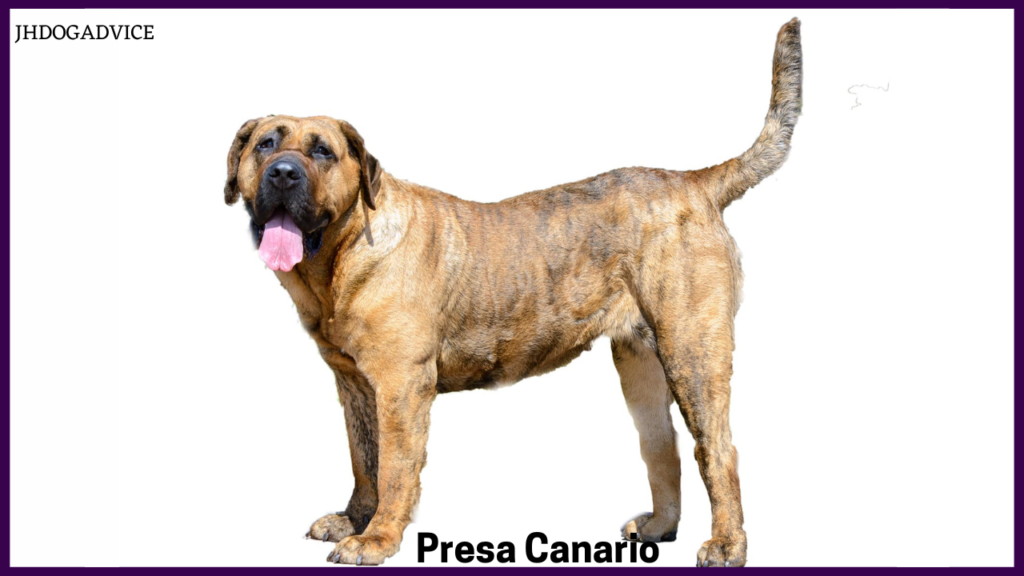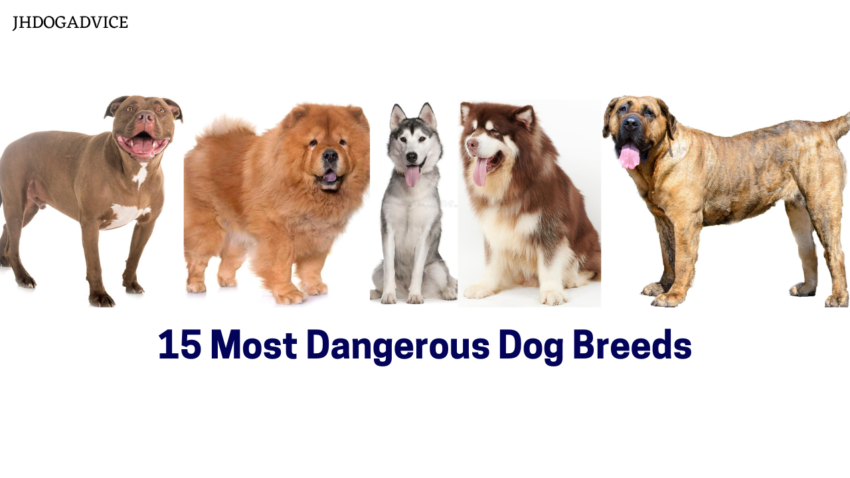15 Most Dangerous Dog Breeds
Dogs are often considered man’s best friend, but some breeds come with a reputation for being potentially dangerous. While aggression in dogs is not solely determined by breed, certain breeds have characteristics that, if not properly handled or trained, can pose risks. Understanding the nature of these breeds and their tendencies is crucial for responsible ownership and public safety. Here, we delve into the 15 most notorious dog breeds known for their potential danger, exploring their traits and offering insights into responsible ownership.
Pit Bull Terrier:
Arguably one of the most controversial breeds, the Pit Bull Terrier has a powerful build and strong jaws. Despite their loyalty and affectionate nature toward humans, their history of dogfighting and improper handling has led to cases of aggression. If that number doesn’t surprise you, it may shock you to learn that only 6% of all dogs in the country fit the pit bull category. Spending generations as hunting dogs and fighting dogs, they were bred to be dangerous.
Rottweiler:
Known for their protective instincts, Rottweilers are large, robust dogs. Without proper training and socialization, their protective nature can translate into aggression towards perceived threats. These dogs are far more dangerous than their preliminary looks in the photos. Rottweiler causes one of the highest deaths due to dog bites in the world. If these digs catch something in their teeth, it is impossible to get it out of their grip. During the period of the study, the rottweiler was responsible for 45 fatal attacks. They have a powerful bite and know how to use it.
German Shepherd:
The German Shepherd Dog, named for his country of origin, also called Alsatian or just Shepherd, was developed in Germany as a herding dog. This breed is talented in terms of being a watchdog, for guarding, and for police and military work. The German Shepherd Dog is a very large breed of dog, which has a dense and water-repellant double coat. It was bred from the older herding dogs, to be able to perform various tasks such as rescuing people in the mountains and performing police work such as tracking and detaining criminals.
Siberian Husky:
With a strong prey drive and an inclination for independence, Siberian Huskies can exhibit stubbornness and a tendency to escape. They require consistent training and exercise to prevent behavioral issues. Huskies were used as sled dogs in the coldest reaches of Canada and the United States. Although they weigh only 60 pounds, they’re strong for their size and are very independent animals. These dogs are highly motivated by catching prey. Most animals that are smaller than them, including humans, can look like prey to them.
Alaskan Malamute:

Similar to Huskies, Malamutes have a strong prey drive and need for activity. Their independent nature demands a firm yet gentle hand in training to prevent potential aggression. These are large dogs originally bred for hauling loads. From their ancestors, they retain a strong drive to pursue and capture prey. Sometimes this manifests as attacks against other pets; sometimes, attacks against children. The litter size of this dog is four puppies to 10 puppies. The lifetime of Mally is 12 years to 15 years.
Doberman Pinscher:
Known for their loyalty and intelligence, Dobermans require proper training and socialization to prevent aggression stemming from their protective instincts. Famed for their alertness, loyalty, and intelligence, Doberman Pinchers are considered to be one of the best guard dogs known to humans. They only attack if they are provoked or sense that their family and their property are in danger.
Bullmastiff:
Gentle and affectionate with their family, Bullmastiffs possess a protective nature. Without early socialization and training, their size and protective instincts can become problematic. These enormous dogs must have plenty of room to roam and exercise. A take-charge guardian would work well with this breed since they can be stubborn. They should also be socialized at an early age and never be left alone with small children or other animals.
Wolf Hybrid:

A mix between a wolf and a domestic dog, Wolf Hybrids can inherit the wild instincts of their wolf ancestors. This can result in unpredictable behavior, posing a risk to owners and the public. While they may seem friendly and attentive most of the time, don’t let your guard down; simply because they are a hybrid. Training is highly recommended as well as introducing them to other dogs and humans when they are puppies.
Boxer:
Energetic and playful, Boxers are typically good-natured. However, their strength and energy can lead to unintentional harm if not properly managed through training. When you combine their physical capabilities with their protective nature, it’s easy to see why boxers can be so troublesome. If someone the dog doesn’t trust does something they perceive as threatening near their owner, the dog could capably attack. However, boxers have earned a reputation as being headstrong.
Great Dane:
The Great Dane, often referred to as the “Apollo of Dogs,” is a giant and majestic breed known for its towering stature and gentle nature. Despite their gentle demeanor, Great Danes’ sheer size can inadvertently cause harm if they lack training or socialization. They can stand up to 30 inches and their enormous size makes them a threat to children and small animals. The neighbor had his hand bitten, but he has since recovered.
Saint Bernard:
Saint Bernards are gentle giants known for their massive size, friendly disposition, and historical role as rescue dogs. Known for their friendliness and loyalty, Saint Bernards require early training and socialization due to their size and strength. They are typically affectionate, patient, and good-natured, especially with children. They have a calm and easygoing temperament, and they are generally good around other pets and animals.
Dalmatian:
The Dalmatian is a distinctive and energetic breed known for its striking spotted coat and unique history. Energetic and intelligent, Dalmatians need consistent training and exercise to channel their energy positively and avoid potential behavioral issues. Dalmatians are known for their high energy levels and playful nature. They are intelligent, outgoing, and often described as being friendly and loyal to their families. They respond well to positive reinforcement techniques, consistency, and patience.
Chow Chow:
The Chow Chow is an ancient breed originating from China, known for its distinctive appearance and unique personality traits. Independent and reserved, Chow Chows can display territorial behavior without proper socialization and training. Their dense double coat can come in various colors, including red, black, blue, cinnamon, and cream. Early socialization is crucial to ensure they remain well-adjusted and comfortable in various social situations. Chow Chows can be protective of their families and territory.
Presa Canario:

The Presa Canario, also known as the Perro de Presa Canario or Canary Mastiff, is a large and robust breed originating from the Canary Islands. Originally bred for working with livestock, Presa Canarios have strong protective instincts that need to be properly managed to prevent aggression. They have a short and coarse coat that comes in various shades of brindle, fawn, or black. They are typically loyal and affectionate towards their families, exhibiting a calm and gentle demeanor. Due to their powerful build and assertive nature, Presa Canarios require firm and consistent training.
Akita:
The Akita is a dignified and powerful breed originating from Japan. With a strong sense of loyalty, Akitas can be reserved and aloof with strangers. Their strong-willed nature demands experienced handling and socialization. Akitas are known for their loyalty and strong bonds with their families. Akitas are intelligent dogs, but they can also be independent and strong-willed. Training requires patience, consistency, and firmness. The breed has a thick double coat that comes in various colors, including red, brindle, white, and pinto.
15 Most Dangerous Dog Breeds in the World
The dogs on this list have been misperceived as being one of the most dangerous dog breeds because, for one reason or another, it’s not their fault. The world is a witness to the friendship between dogs and humans. The dog breeds have a range of temperaments, from highly friendly to dangerous. Here’s a list of 15 breeds that have historically been associated with potential risks due to their size, strength, and characteristics:
- Tosa Inu
- Staffordshire Bull Terrier
- Boerboel
- Kuvasz
- Gull Dong
- Perro de Presa Mallorquin
- Fila Brasileiro
- Caucasian Shepherd Dog
- Irish Wolfhound
- Argentine Dogo
- Bull Terrier
- Tibetan Mastiff
- Japanese Tosa
- Bandog
- Rhodesian Ridgeback
For more information about DOG BREEDS visit the site.
15 Most Dangerous Dog Breeds in America
There’s a saying among some dog fanciers: “There’s no such thing as a bad dog breed.” By that, they mean that no type of dog is dangerous by its very nature. If adopted by a loving family, they say, even the most notorious dog breeds will become friendly and peaceful. Responsible ownership, proper training, and early socialization are key elements in promoting safe and harmonious interactions between dogs and humans.
- Pit Bull Terrier
- Rottweiler
- German Shepherd
- Siberian Husky
- Alaskan Malamute
- Doberman Pinscher
- Chow Chow
- Presa Canario
- Akita
- Mastiff
- Cane Corso
- American Bulldog
- Belgian Malinois
- Rhodesian Ridgeback
- Dogo Argentino
15 Most Dangerous Dog Breeds in Australia
In Australia, similar to many other regions, categorizing dog breeds as “dangerous” can be controversial due to the diverse nature of individual dogs within a breed. However, some breeds have gained attention due to their size, strength, and tendencies if not properly trained or socialized. Here’s a list of breeds that have been associated with potential risks:
- Pit Bull Terrier
- Rottweiler
- Siberian Husky
- Chow Chow
- Presa Canario
- Akita
- Doberman Pinscher
- Mastiff
- Cane Corso
- American Bulldog
- Belgian Malinois
- Alaskan Malamute
- Rhodesian Ridgeback
- American Staffordshire Terrier
- Argentine Dogo
15 Most Dangerous Dog Breeds for Home
When considering dogs for home environments, it’s essential to focus on breeds that fit well into family settings and can adapt to living indoors, while also considering their potential for guarding or protective instincts. Here’s a list of breeds that might pose challenges in a home environment if not properly trained, socialized, or given adequate attention:
- Great Dane
- Saint Bernard
- Dalmatian
- Belgian Malinois
- Cane Corso
- Tosa Inu
- Staffordshire Bull Terrier
- Boerboel
- Kuvasz
- Gull Dong
- Pit Bull Terrier
- Rottweiler
- German Shepherd
- Bullmastiff
- Doberman Pinscher
World’s Top 20 Most Dangerous Dog Breeds
Dogs are very loyal animals to the human being. They are also the most domesticated animals in the world. Some people keep the dogs for security purposes while some keep the dogs because they like them. Choosing a dog that matches your lifestyle, investing in proper training, socializing the dog from an early age, and providing adequate mental and physical stimulation are crucial factors in ensuring a harmonious relationship between the dog and the household.
- Pit Bull Terrier
- Rottweiler
- German Shepherd
- Bullmastiff
- Doberman Pinscher
- Akita
- Siberian Husky
- Alaskan Malamute
- Boxer
- Rhodesian Ridgeback
- Presa Canario
- American Staffordshire Terrier
- Argentine Dogo
- Mastiff
- Chow Chow
- Great Dane
- Saint Bernard
- Dalmatian
- Belgian Malinois
- Cane Corso
Conclusion:
While these breeds have been highlighted for their potential danger, it’s crucial to note that individual temperament varies within each breed. Responsible ownership, early socialization, consistent training, and proper care play pivotal roles in determining a dog’s behavior. Understanding a breed’s tendencies is the first step towards promoting responsible dog ownership and ensuring the safety of both owners and the community at large.
